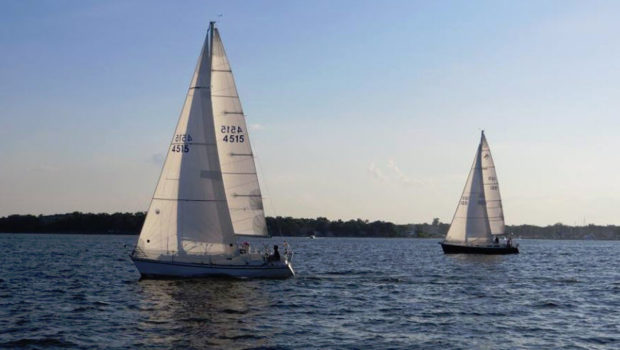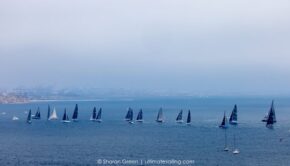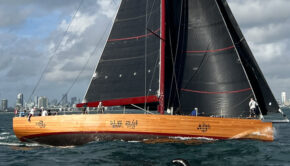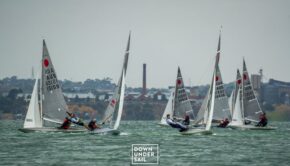Converting to ORC for Racer Cruiser fleet
Published on July 24th, 2016
The effectiveness of rating rules to fairly handicap competition is reliant on the boats having similar performance characteristics. As new boats became more ‘racer’ and less ‘cruiser’, generations of comfortable race boats found they were at a disadvantage on the prevailing windward -leeward courses.
Enter the Chesapeake Racer Cruiser Association, an organization launched in 2015 to create the structure and rules to promote dual purpose boat racing on the Chesapeake. While their first season was successful beyond any expectations, the 2016 season has been about building on what they’ve learned.
As Jay Tyson, CRCA administrator reports, that includes the conversion to ORC ratings to grow the CRCA fleet…
This narrative is the 1,000 words that try to explain this spreadsheet. The short version is that PHRF ratings are not a viable tool to handicap a fleet of boats with the wide variety of designs, displacements, and sail plans that make up a Racer Cruiser fleet.
ISSUE #1 – PHRF assumes that displacement has no effect on the potential performance
ISSUE #2 – PHRF assumes that changes in sail plan have the same effect over the entire range of wind speeds.
The fact is that in 1947 when PHRF was created, these were necessary assumptions. However, in an age when computers have become everyday tools, these assumptions are no longer necessary.
This exercise uses the J/35 because it is the boat that US PHRF designated as the “benchmark”. Looking at the nine J/35’s with 2016 ORC Certificates, we see five with headsails between 153% and 143% that would rate 72 under PHRF of the Chesapeake. The other four are between 101% and 96% rate 78 under PHRF.
Consider both Displacement and Sail Plan, ORC has a range of 21.9 sec/nm on these boats rather than the 6 in PHRF.
The key issue is that while PHRF might be able to more accurately/fairly rate these boats, it would still only be in a single wind range.
The worksheet shows that ORC recognizes that having a heavier boats hurts more in light wind and that have smaller sails hurts even more in light wind. But by the time the wind builds to a “heavy” range there is very little difference.
The final piece of the puzzle that effects Race Cruisers is the handling of downwind configurations other that full “racing spinnakers” – either traditional symmetrical or asymmetrical on a sprit. The key point here is that the “loss” of a spinnaker has a bigger effect on a boat using a small headsail.
Okay, so this is a lot less than a thousand words but I haven’t touched on:
• The ability of ORC to handle custom and seldom raced designs.
• The power of ORC – Performance Line scoring which pulls all of this together without the Race Committee having to make any judgement call on the wind range.









 We’ll keep your information safe.
We’ll keep your information safe.